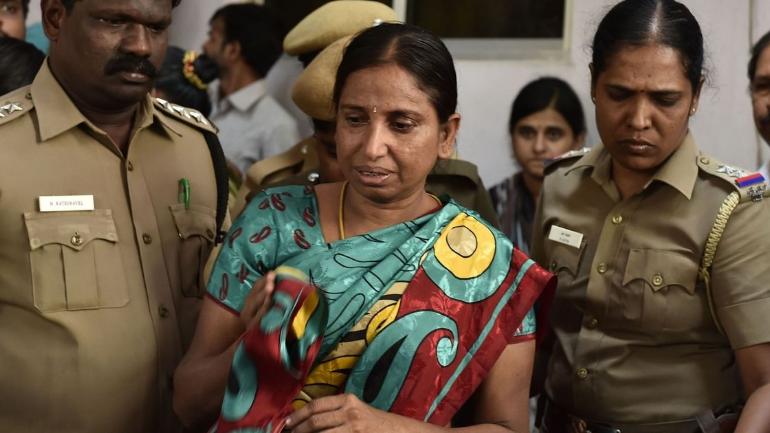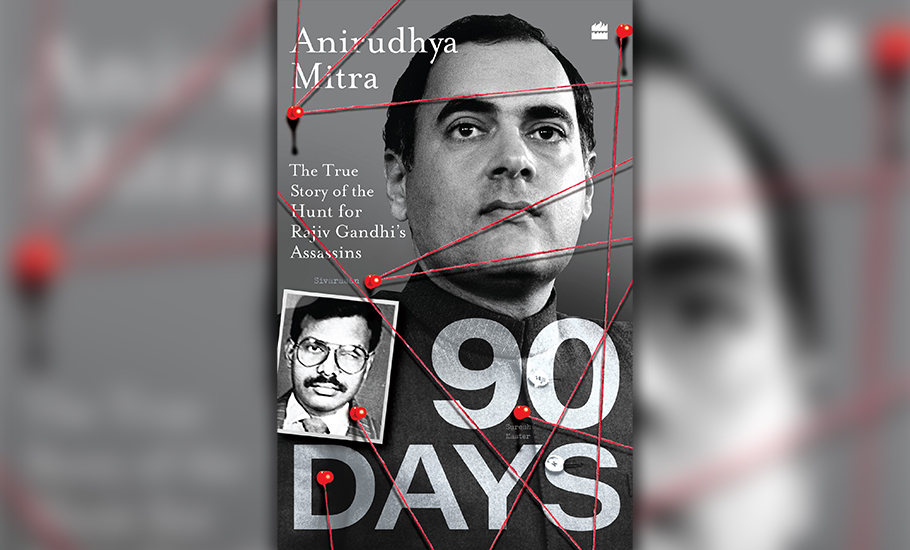
Rajiv Gandhi assassination: Among 6 convicts, the killer who looked innocent

The Supreme Court commuting the life sentence of the six convicts in the Rajiv Gandhi assassination case and ordering their release after 30 years in prison can be seen as a liberal and reformative landmark in the history of criminal jurisprudence. The SC has released them under Article 142 of the Constitution which gives the apex court extraordinary powers to intervene and judge any case.
The resolution in the case and the eventual conviction of all the accused in the assassination case was a feather in the cap of the CBI and the SIT under D.R. Karthikeyan under whom the entire investigation was carried out with the help of Amod Kanth, Amit Verma and other top CBI officers, IB, and the Tamil Nadu police’s Q Branch.
The investigation and the conviction would have been impossible but for the roll of film found in the camera of LTTE photographer Hari Babu, who perished in the suicide bomb attack. Twenty-six accused were sentenced to death, but no hanging happened as all sentences were commuted on appeal and some accused were acquitted.
Revelations in Anirudhya Mitra’s book, 90 Days
All the details of the case are well-known, but a book released earlier this year, titled 90 Days: The True Story of the Hunt for Rajiv Gandhi’s Assassination by Anirudhya Mitra (HarperCollins India), who reported extensively on the probe for India Today magazine, reveals the excruciating nature of the superb investigation and also the way the LTTE planned the operation.
The book reveals that though the planning was done by the LTTE following a meeting in the jungle called by Prabhakaran in early 1990, a crucial role was handled by Bhagyanathan and his sister Nalini Sriharan on whose petition the Supreme Court finally delivered the judgement. Nalini has been the most active in jail among the six convicts, relentlessly trying to get an early release and leaving no stone unturned in working the lethargic judicial and political process and also writing a book in prison. She also succeeded in showing remorse for the killing and presented a picture of a hapless lady, who was trapped in an elaborate and devilish plan. That is far from the truth.
Actually, Nalini expressed no qualms during any part of the plan and, along with her brother, was central to all crucial moves made in the days prior to May 21, 1991 when the killing occurred. The hub of all activity, where the hiring and planning were conducted, was the office of Shubha News and Photo agency, run by Shubha Sundaram. It was in this office that Bhagyanathan, who was an activist of the pro-LTTE Dravida Kazhagam (DK), was recruited by LTTE operatives from Jaffna, Muthuraja and Baby Subramanyam, sent by Prabhakaran.
‘Nalini Sriharan was easy to recruit’
Bhagyanathan’s family was not well-off and he was a supplier of stationery items to an office in which Nalini worked as secretary. Their mother was a nurse. Bhagyanathan and Nalini were hired by Baby Subramanyam, who sold him a printing press for the measly amount of Rs 5,000. Nalini had easy access to the LTTE literature churned out by the press and she helped out in the work after her office hours. “Nalini was easy to recruit,” Mitra writes.
Also read: SC has altered its previous views to free Rajiv Gandhi assassination convicts
Though Nalini was always based in Chennai and had never been to Sri Lanka, so keen was she to be part of the LTTE that she brought out a book titled Satanic Forces: Heinous crimes of the Indian Peace Keeping Force. It was a compilation of various articles in the Indian press about LTTE and Indian Peace Keeping Force (IPKF). Being the first hires, Bhagyanathan and Nalini stuck with the LTTE planners throughout, completely convinced about the mission, though the target (Rajiv Gandhi) was revealed only much later.
Murugan (also released now), who is from Jaffna and later married Nalini, hired two youngsters from Jaffna: Jayakumar and Robert Pias (also released) and sent them to Madras in the mid-1990. They stayed at the house of Arivu Perulibalan, Jayakumar’s brother, at Savri Nagar Extension in Chennai suburb. Arivu was a diploma holder in computer science and he designed the Denim jacket with six interconnected grenades (CD4RDX with 2800 splinters of 2.0 mm each) which Dhanu wore to carry out the killing. Two toggle switches were used.

It was in February 1990 that LTTE’s Muthuraja introduced Murugan to Bhagyanathan and his sister Nalini. “By then, Nalini had developed a deep sense of hatred for Rajiv Gandhi at a time when his return to power was becoming imminent. Murugan, thus, had no problem in finalising the third hide-out. With three safe shelters, an electronic expert in Arivu who had been asked to improvise a bomb out of grenades that could be detonated by a suicide bomber, three converts in Nalini, Padma and Bhagynathan, and a recruiter in Shubha Sundaram, the plot was in place,” Mitra writes.
Sivarasan, who was the mastermind, arrived in March 1990 to take the plan forward. He had enough expertise in carrying out killings. He had planned and killed K. Padmanabha, leader of the Sri Lankan Tamil group, Eelam People’s Revolutionary Liberation Front (EPRLF), based in Chennai. This fact came to light only later. Six of them had hijacked a Maruti van to carry out the killing in 1990.
The final planning
The entire planning for the last day was carried out in Nalini’s house on May 21. Hari Babu, the photographer, was asked to purchase the sandalwood garland. It was from this house that Nalini, Shubha (standby suicide bomber), Dhanu and Sivarasan left for Parry’s Corner, where Hari Babu was waiting with the garland.
They boarded a bus for Sriperumbudur, where they reached around 8 pm. Nalini and Shubha sat in the crowd while Dhanu moved towards Rajiv and detonated the bomb by using her right hand finger at 10.19 pm. Throughout all this and during the previous night Nalini sat along with the gang, unruffled, to watch a movie. After the blast, she and Shubha coolly walked to the bus stop and met Sivarasan to plan their escape. So ruthless was Nalini that she went to the office the next day. She used a duplicate key to open the office on Sunday and leave her resignation letter before she escaped.
Also read: Rajiv Gandhi assassination case: SC orders release of Nalini, five others
Nalini was a tough nut to crack. It took the SIT almost three days to make her talk about the crime. During the interrogation, she openly abused Rajiv and called the SIT “butchers of innocent Tamils.” She did not talk for 60 hours after she was captured from a bus stop in Madras. Two days prior to the killing, she had taken the two human bombs for shopping: to buy salwar kameez. Nalini’s phone number (419493) was found with another LTTE operative, who was stopped at a routine check a week or so after the assassination. This was the first major breakthrough. When cops reached her office, she told them a story and then vanished.
During the last 30 years in jail, the same Nalini was a different person. It was Nalini that Priyanka Gandhi met in Vellore jail to pardon her. In jail, she transformed herself into the ‘victim-mother’ and filed petition after petition while all the other men, including her husband Murugan, did nothing. Her daughter is now in an undisclosed foreign country with Nalini’s mother. Nalini never gave up hope and, finally, came the order of her release.
Out of jail, Nalini obviously will have to reinvent herself once again. For a person like her, it should be an easy task, considering all the missions in her life that she has engineered and executed so perfectly.

